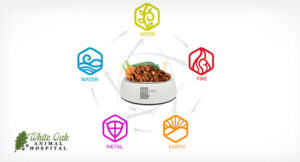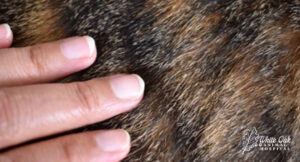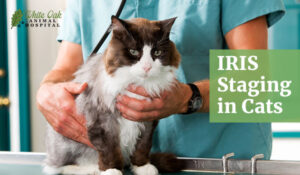
Eastern food therapy for pets is gaining remarkable traction among pet owners who seek a holistic approach to their pets’ health and well-being. At the heart of this therapy lies an ancient wisdom that views food as much more than just a source of nutrients. It’s integral to a pet’s overall health, echoing the adage’ food is medicine.’
 For those new to Eastern food therapy for pets, it’s essential to understand its foundational belief: the food we provide our pets does more than fill their stomachs. Each meal is an opportunity to nourish their bodies and balance their internal energy. This approach, steeped in thousands of years of Eastern tradition, classifies foods based on their energetic impact rather than just their nutritional content.
For those new to Eastern food therapy for pets, it’s essential to understand its foundational belief: the food we provide our pets does more than fill their stomachs. Each meal is an opportunity to nourish their bodies and balance their internal energy. This approach, steeped in thousands of years of Eastern tradition, classifies foods based on their energetic impact rather than just their nutritional content.
As pet owners, the concept is empowering. Imagine the peace of mind that comes with knowing every meal you serve satisfies your pet’s hunger and contributes to their holistic health. Eastern food therapy for Pets invites us to rethink our pets’ diets, turning each feeding into thoughtful care grounded in age-old knowledge.
Understanding Eastern Food Therapy for Pets
 Eastern food therapy for pets, an intriguing concept in pet nutrition, is deeply rooted in ancient Eastern medicinal practices. This therapy, much like the Hippocratic philosophy of “let medicine be your food and food be your medicine,” emphasizes the medicinal properties of food. It’s not just about feeding pets healthy foods; it’s about choosing specific foods to address particular issues within their bodies.
Eastern food therapy for pets, an intriguing concept in pet nutrition, is deeply rooted in ancient Eastern medicinal practices. This therapy, much like the Hippocratic philosophy of “let medicine be your food and food be your medicine,” emphasizes the medicinal properties of food. It’s not just about feeding pets healthy foods; it’s about choosing specific foods to address particular issues within their bodies.
The origins of Eastern food therapy can be traced back to Traditional Chinese Medicine (TCVM), which views food as possessing unique energies that impact an animal’s health. This practice involves selecting foods based on their warming or cooling properties and how they affect different body parts. For example, watermelon is used for its cooling properties, ideal for pets with inflammation or itchy skin, while pumpkin, a warming food, is better for older, weaker animals.
In contrast to Western nutritional practices, which often focus on the nutritional content of food, Eastern food therapy for pets prioritizes balance and harmony in a pet’s diet. It’s about understanding the Yin and Yang and how different foods contribute to an animal’s overall energy balance. This highly individualized approach recognizes that one diet does not fit all pets, especially when disease is involved.
The selection of foods in Eastern food therapy is also linked to the seasons, with dietary recommendations adapting to the changing climate. This aspect is particularly significant in regions with dramatic seasonal changes, ensuring that pets receive the most appropriate nutrition throughout the year.
Core Principles of Eastern Food Therapy for Pets
 Eastern food therapy for pets integrates age-old Eastern philosophy with modern pet nutrition. This approach is central to the Yin and Yang principles, which view health as a balance of opposite forces. In Eastern food therapy, foods are classified as warming, cooling, or neutral, each impacting pets differently based on their unique needs.
Eastern food therapy for pets integrates age-old Eastern philosophy with modern pet nutrition. This approach is central to the Yin and Yang principles, which view health as a balance of opposite forces. In Eastern food therapy, foods are classified as warming, cooling, or neutral, each impacting pets differently based on their unique needs.
The Five-Element Theory, another pillar of Eastern food therapy for pets, relates specific foods to the health of major organs like the heart, spleen, and liver. For example, a pet with a weak liver may benefit from foods that specifically support liver function. This personalized approach recognizes that one diet does not fit all, especially in cases of health concerns.
Additionally, this therapy considers seasonal changes in diet, mirroring the natural eating habits in varying climates. It’s about understanding and harmonizing with the natural cycles and the individual pet’s health needs.
By embracing the core principles of Eastern food therapy for pets, pet owners can provide a balanced, thoughtful diet, contributing positively to their pets’ holistic health and well-being.
5 Amazing Benefits of Eastern Food Therapy for Pets
Improved Digestion and Metabolic Balance
 Eastern food therapy for pets emphasizes using foods based on their energetic qualities – warming, cooling, or neutral. This unique approach aids in balancing the digestive system. For pets with digestive issues, incorporating specific foods that align with their body’s energy can lead to smoother digestion and improved gut health. For instance, cooling foods like watermelon can soothe a pet’s digestive system, while warming foods like pumpkin can boost metabolism in older, more sedentary pets.
Eastern food therapy for pets emphasizes using foods based on their energetic qualities – warming, cooling, or neutral. This unique approach aids in balancing the digestive system. For pets with digestive issues, incorporating specific foods that align with their body’s energy can lead to smoother digestion and improved gut health. For instance, cooling foods like watermelon can soothe a pet’s digestive system, while warming foods like pumpkin can boost metabolism in older, more sedentary pets.
Support for Organ Function
Eastern food therapy provides a diet that enhances their overall energy and vitality by focusing on the Yin and Yang balance within pets. Pets receiving a diet tailored to their specific energetic needs display increased liveliness and well-being. This is especially beneficial for pets suffering from lethargy or low energy levels.
Enhanced Overall Energy and Vitality
One of the remarkable benefits of Eastern food therapy for pets is its impact on coat and skin health. The therapy’s focus on nutrition that suits the pet’s constitution can lead to a healthier, shinier coat and improved skin condition. For example, pets with dry skin might benefit from foods with a higher moisture content, addressing the root cause of the issue.
Better Coat and Skin Health
 The Five-Element Theory, integral to Eastern food therapy, links specific foods to the health of major organs like the heart, spleen, and liver. Incorporating foods that support particular organ functions can be crucial in maintaining or improving a pet’s organ health. For instance, foods rich in specific nutrients can enhance liver function, vital for pets with liver conditions.
The Five-Element Theory, integral to Eastern food therapy, links specific foods to the health of major organs like the heart, spleen, and liver. Incorporating foods that support particular organ functions can be crucial in maintaining or improving a pet’s organ health. For instance, foods rich in specific nutrients can enhance liver function, vital for pets with liver conditions.
Alignment with Seasonal Needs
Eastern food therapy for pets also considers seasonal changes, ensuring that a pet’s diet adapts to the changing environment. This approach aligns with natural eating habits and is particularly significant in regions with pronounced seasonal variations. A diet that changes with the seasons can help pets cope better with environmental stresses and maintain their health throughout the year.
Integration with Conventional Veterinary Medicine
Integrating Eastern food therapy for pets with conventional veterinary medicine offers a comprehensive approach to pet health. This combined strategy is gaining recognition among veterinarians for its ability to enhance overall treatment plans. While traditional medicine addresses acute conditions, Eastern food therapy adds a preventative dimension, focusing on dietary balance to improve health outcomes.
Eastern food therapy for pets represents a significant shift in how we approach pet nutrition and wellness. Rooted in thousands of years of Eastern philosophy and coupled with Western nutritional science, this therapy offers a holistic path to pet health, as evidenced by brands like PET | TAO.
PET | TAO, co-founded by Dr. Marc Smith and Dr. Casey Damron, exemplifies the integration of Eastern food therapy into modern pet care. Their products, formulated based on the principles of TCVM and extensive veterinary experience, reflect a deep understanding of the unique nutritional needs of pets.
 In embracing this holistic approach, we open up a world of benefits for our furry friends, ensuring they lead healthier, more harmonious lives. For pet owners seeking to integrate this approach, consulting with veterinarians like Dr. Casey Damron at White Oak Animal Hospital or through TCVM Telemedicine consultations can provide personalized guidance and care tailored to each pet’s unique needs and constitution.
In embracing this holistic approach, we open up a world of benefits for our furry friends, ensuring they lead healthier, more harmonious lives. For pet owners seeking to integrate this approach, consulting with veterinarians like Dr. Casey Damron at White Oak Animal Hospital or through TCVM Telemedicine consultations can provide personalized guidance and care tailored to each pet’s unique needs and constitution.
Frequently Asked Questions
What exactly is Eastern Food Therapy for Pets?
Eastern food therapy for pets is a holistic nutritional approach rooted in Traditional Chinese Veterinary Medicine (TCVM). It focuses on the energetic properties of foods – categorizing them as warming, cooling, or neutral – to balance a pet’s internal energy. This approach differs from traditional Western diets by emphasizing pets’ overall well-being and energy balance rather than just nutritional content.
Can all pets benefit from Eastern Food Therapy?
Most pets can benefit from Eastern food therapy; however, it’s particularly effective for pets with specific health issues or dietary sensitivities. Since the therapy is highly individualized, it’s recommended to consult with a veterinarian or a pet nutritionist experienced in TCVM to tailor the diet to your pet’s unique needs.
Is Eastern Food Therapy for Pets compatible with conventional veterinary treatments?
Absolutely. Eastern food therapy for pets complements conventional veterinary care by adding a preventive and holistic dimension to pet health. Many veterinarians now recognize and integrate this approach into treatment plans, finding it beneficial in improving overall health outcomes and pet wellbeing.
Related Posts
-
Food Therapy for Cats
Could your feline benefit from food therapy for cats? Yes! In fact, you can help…
-
Canine Wellness: Exploring Eastern Food Therapy for Dogs and 3 Alluring Reasons to Embrace It
Eastern food therapy for dogs is a hopeful option to ensure the well-being of our…
-
Why Try Food Therapy For Dogs?
Have you heard of food therapy for dogs? PET | TAO, a premium holistic pet…
-
5 Benefits Of Feeding Freeze Dried Dog Food
Compared to freeze dried dog food, home cooking is time-intensive. Furthermore, if you want to…









